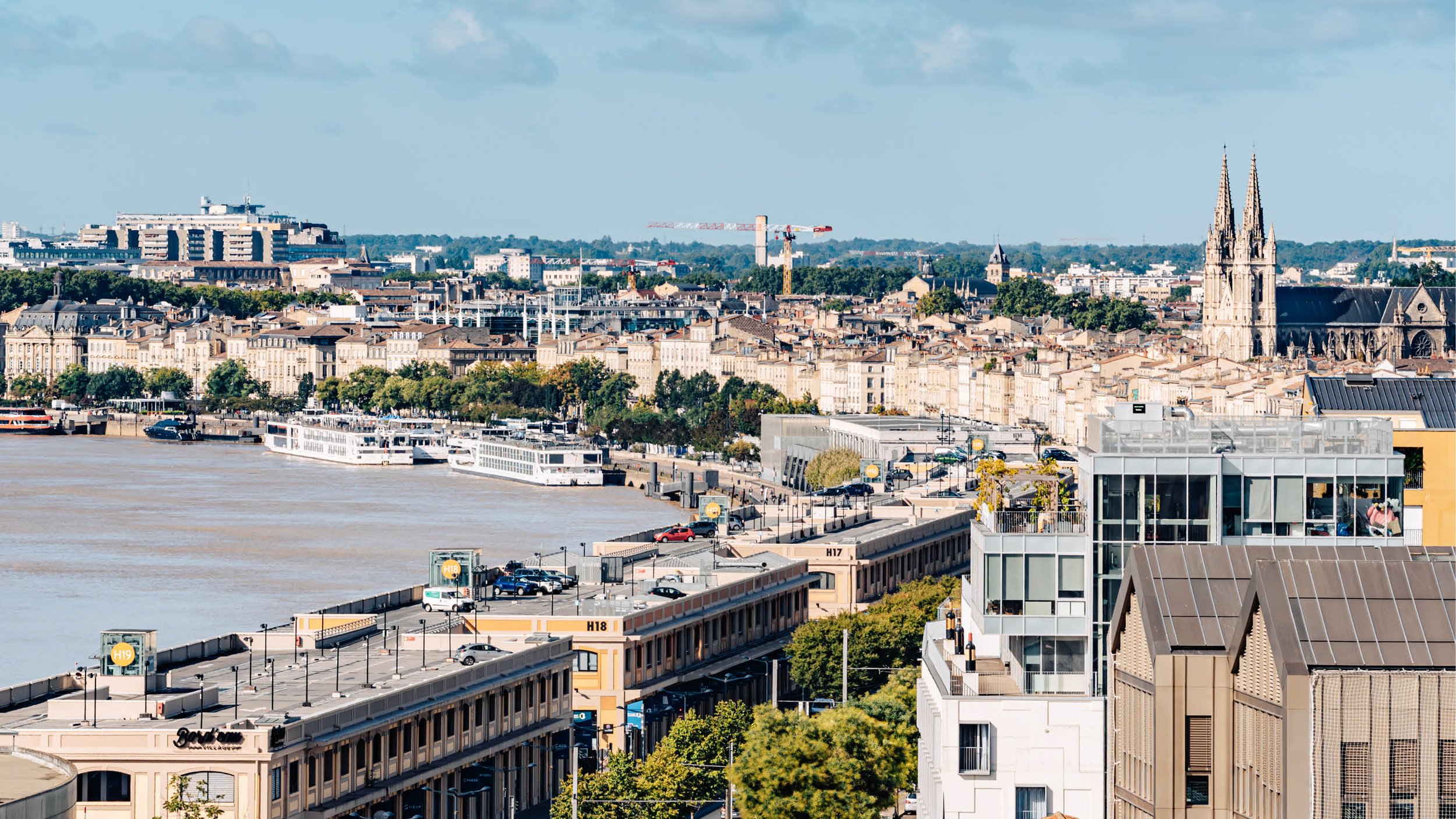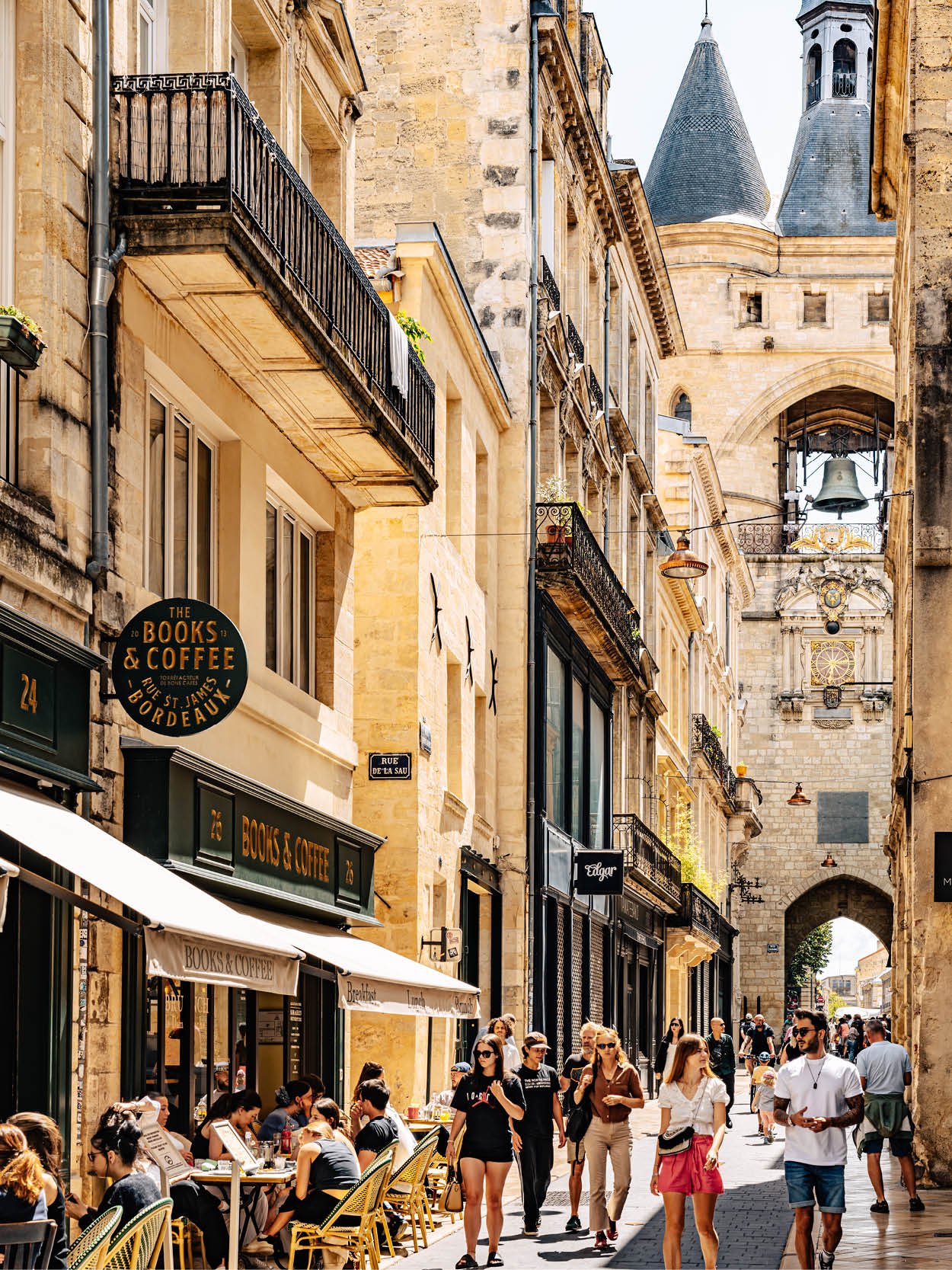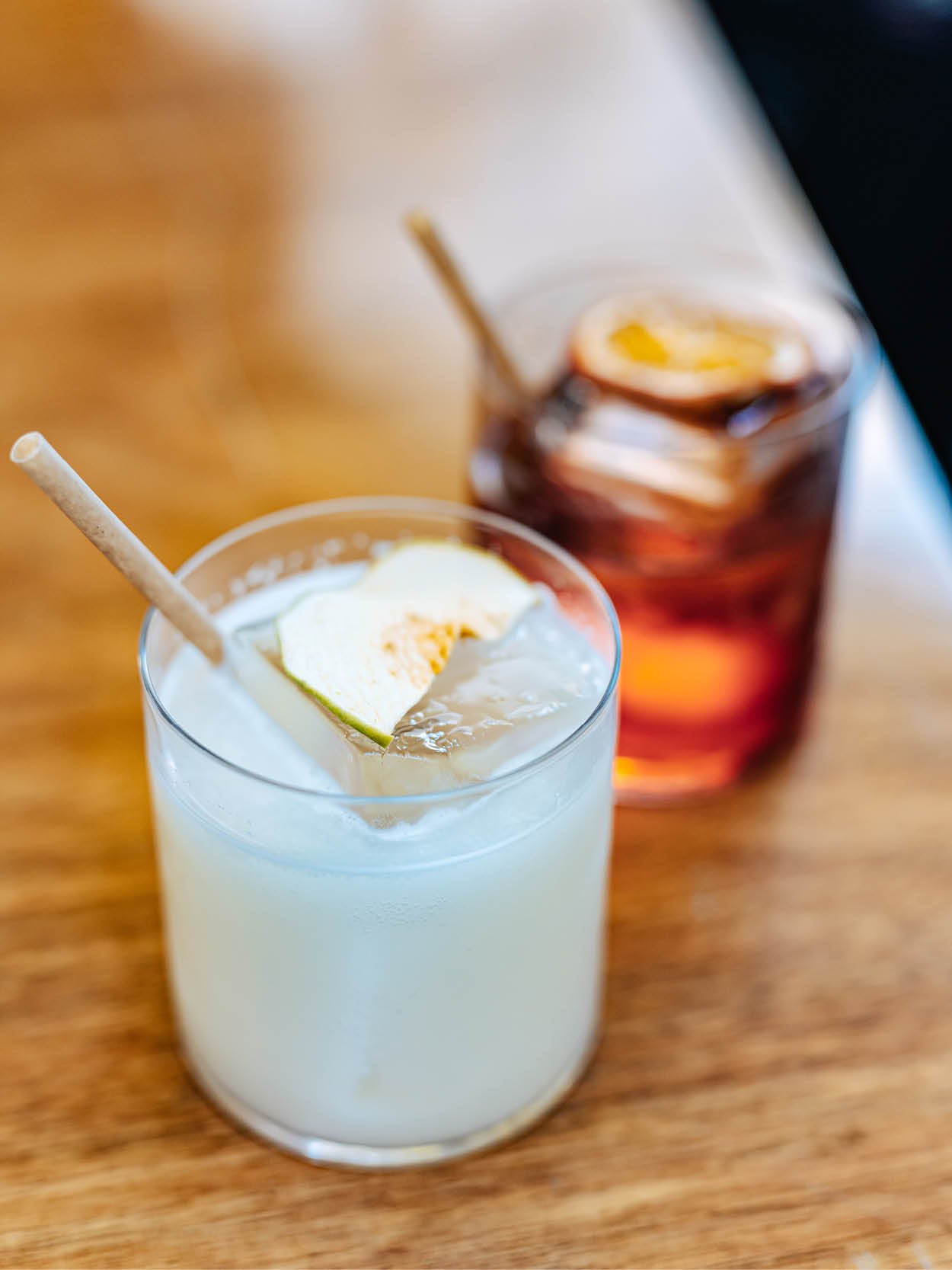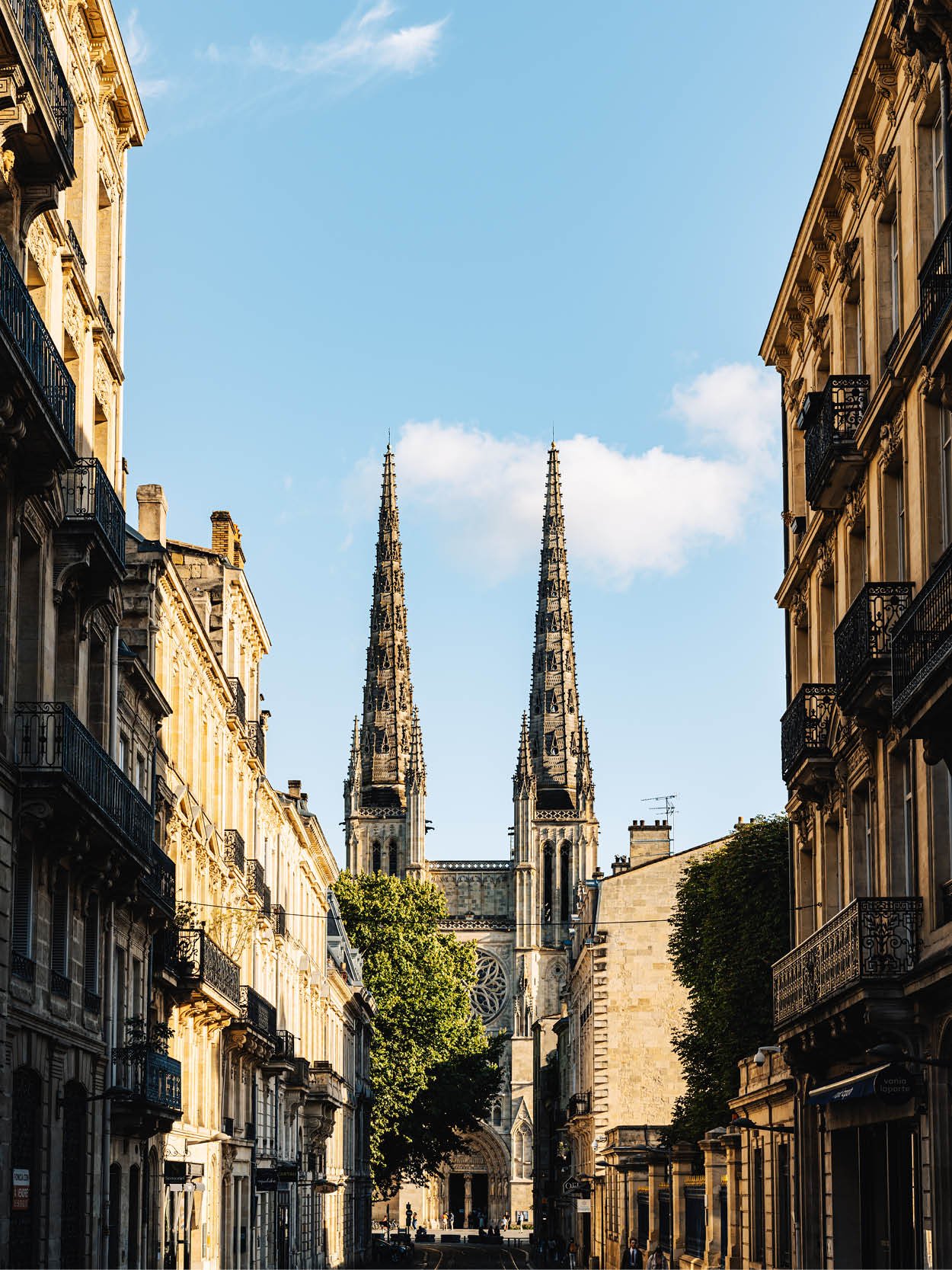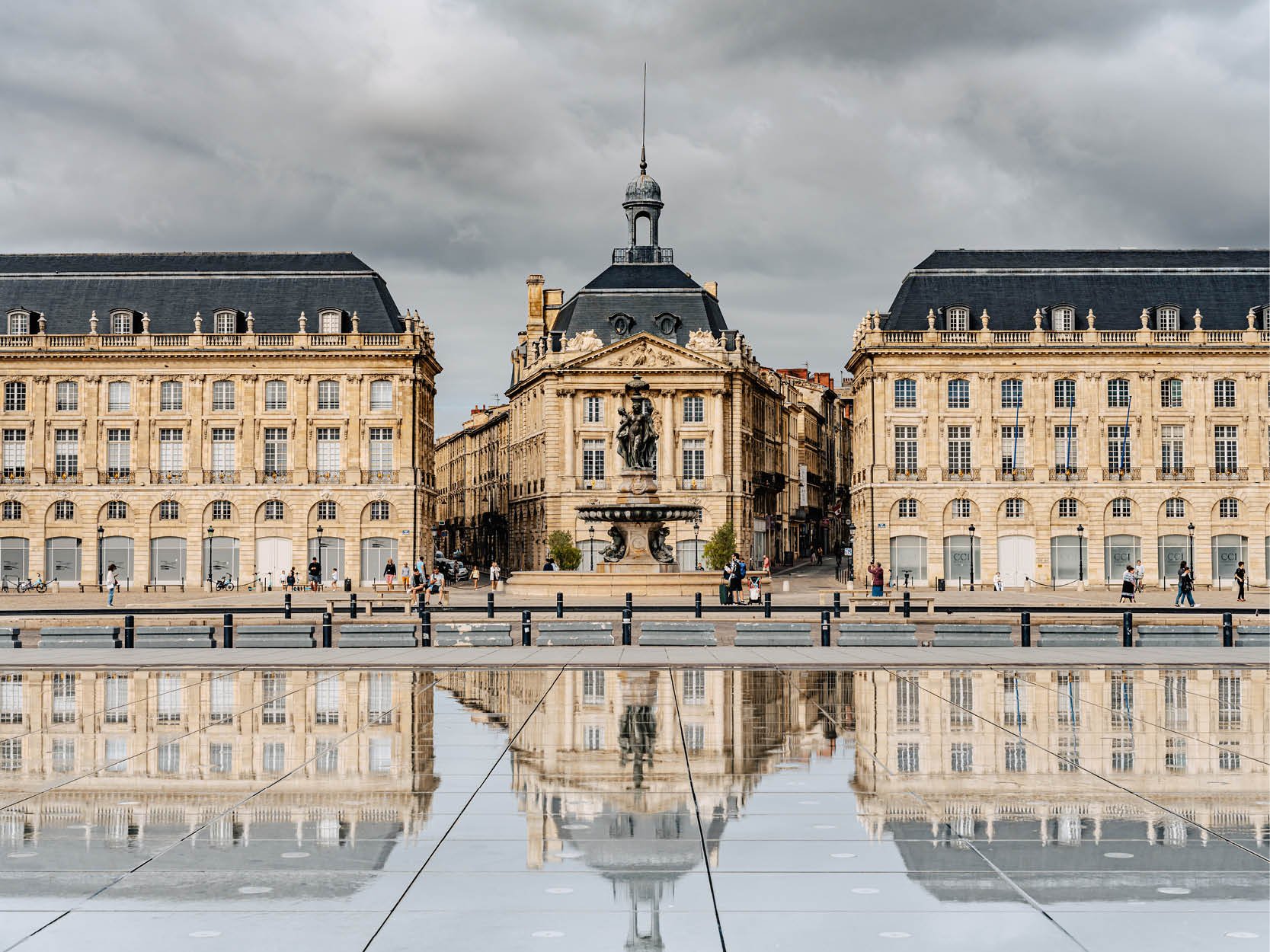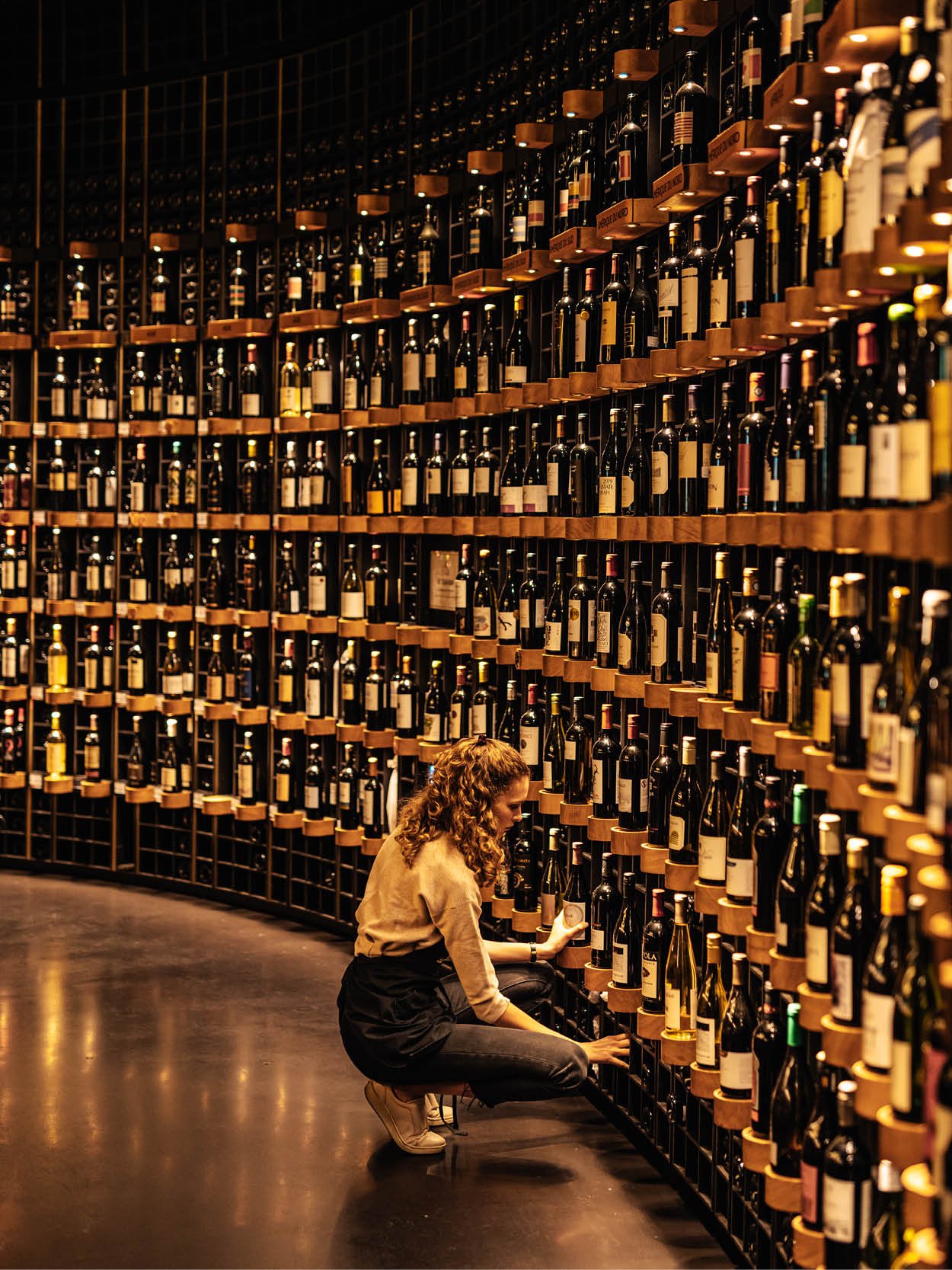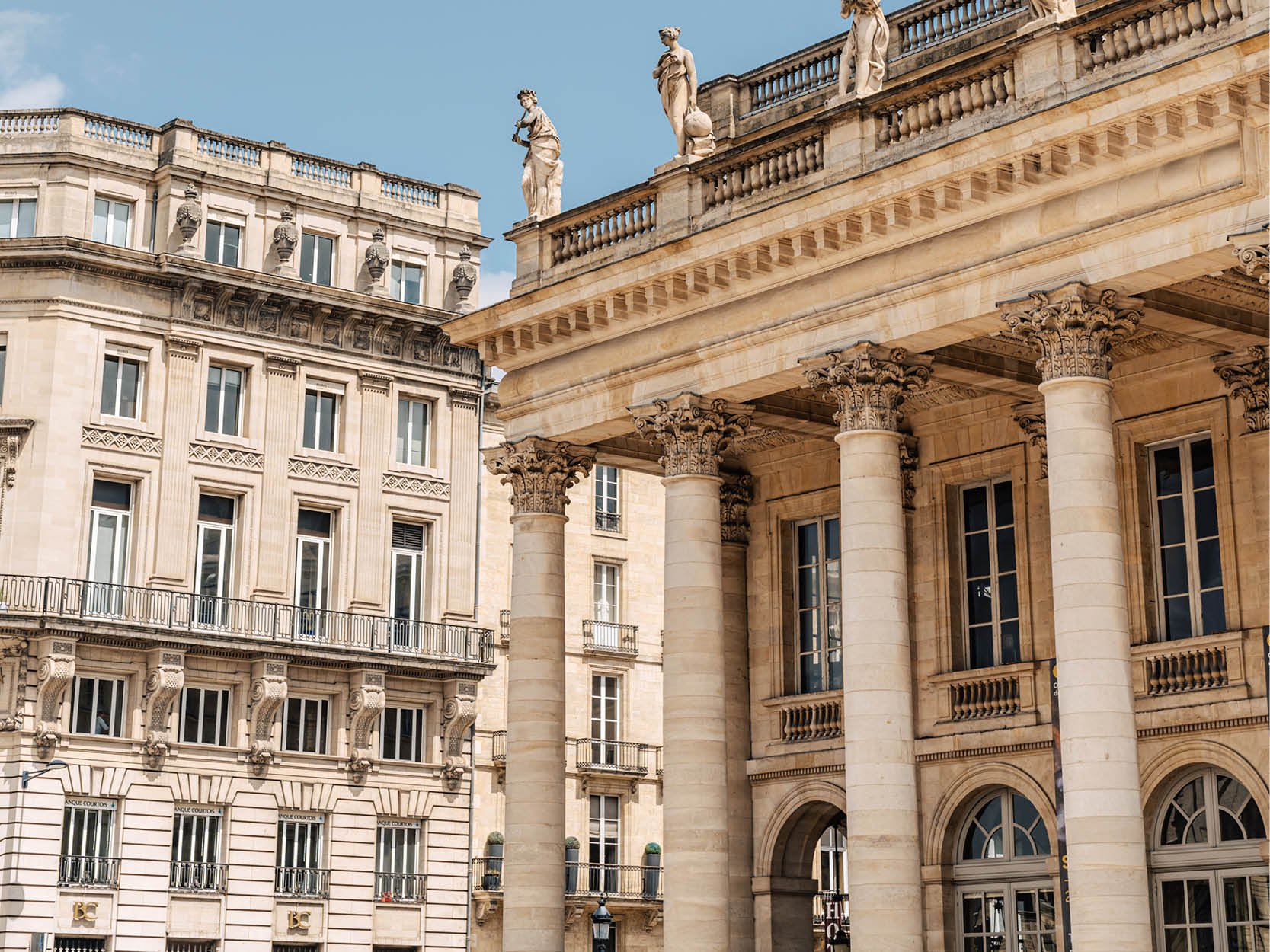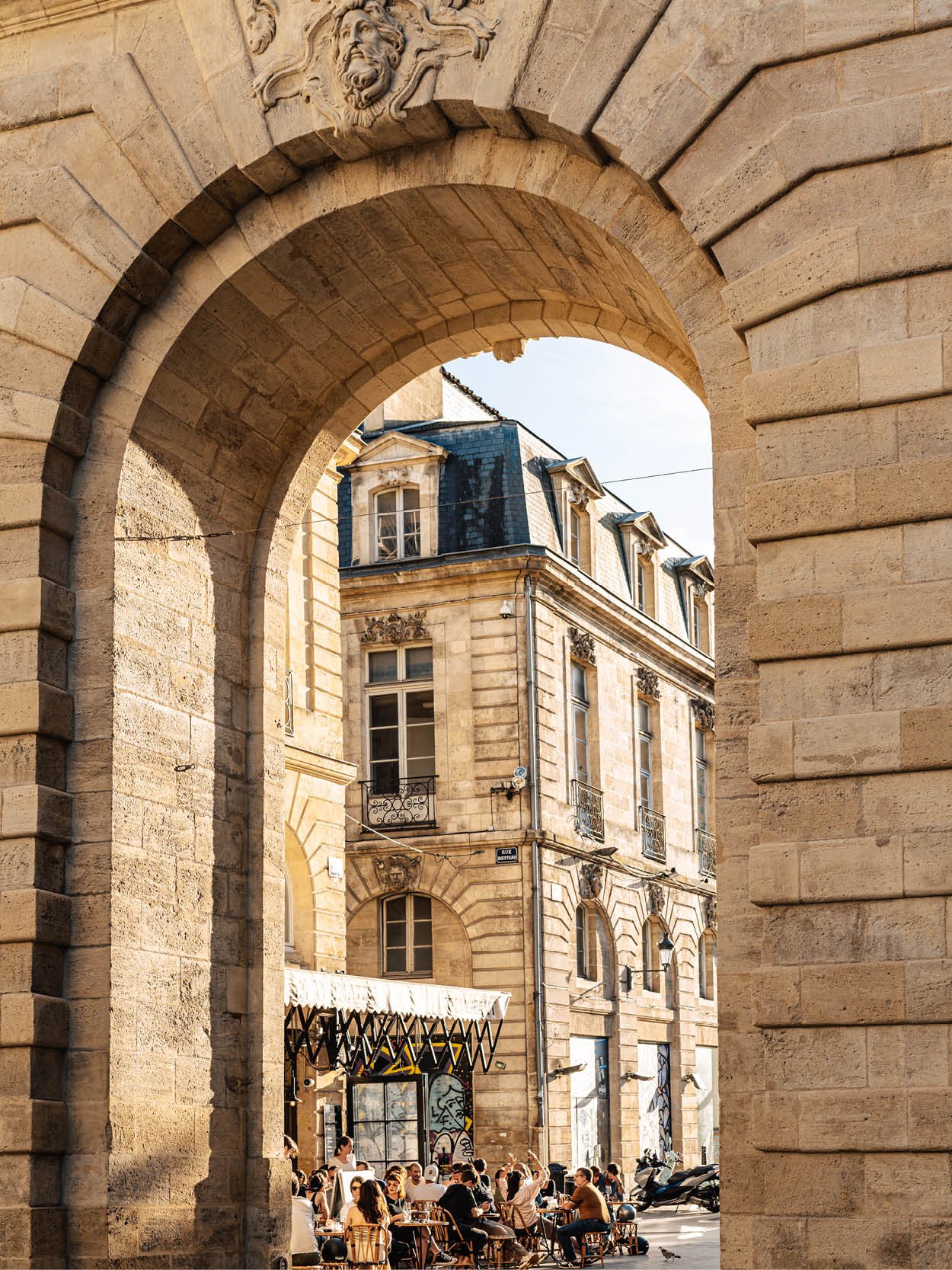Rugby Travel guide to Bordeaux
Bordeaux is a city of history, culture, gastronomy and, of course, sport. The familiar faces of Matthieu Jalibert and Damian Penaud ply their trade here, but there’s far more than just rugby to discover in the Nouvelle-Aquitaine capital. Here is everything a visiting fan needs to know.
What’s Bordeaux like?
The vines that surround it get all the credit, but this city has been revamped in recent times, earning itself UNESCO status, and, like so many towns in these parts, is one to get lost in. You’ll always find a great new brasserie, bar or pub that you never knew you were looking for, and naturally its viticulture heritage is a big reason to visit. Wine tours, tastings – official and unofficial – are plentiful, but the dominance on the riverbank of the magnificent La Cite du Vin building, shaped to reflect the swirl of wine, reflects the importance of grapes. The capital of south-western France’s Nouvelle-Aquitaine region is often dubbed ‘Sleeping Beauty’, but look to the grand 18th-century mansions, modern art museums, bustling bistros and tree-shaded boulevards curving along the banks of the Gironde and Bordeaux’s stunning attributes are obvious.
What are the claims to fame of Bordeaux?
A striking architectural ensemble created during the age of Enlightenment had Bordeaux’s Port de la Lune named a UNESCO World Heritage Site in 2007. That same year, it hosted the Rugby World Cup where South Africa scored their second trophy (their third also coming in France in 2023), and is home to the Union Bordeaux Bègles, one of France’s top rugby sides. It’s also the wine capital of the world, responsible for 15% of the country’s pours and hemmed by neat rows of sun-drenched vineyards.
How do I get there?
Flights from the UK to Bordeaux take around an hour and half, with easyJet and Ryanair flying direct from London Stansted and Gatwick to Bordeaux–Mérignac - prices range anywhere from £75 return to £200. From there, it’s a 30-minute drive, a 30-minute tram ride or a 45-minute bus ride to the city-centre.
You can also catch the train from London to Bordeaux-Saint-Jean via Paris or Lille; Eurostar and TGV operate on the route. You can buy tickets from £125 to £180 and the journey will take just under six hours.
What do I have to see in Bordeaux?
From the columns of the Grand Théâtre to the Porte Dijeaux arch, a quick stroll through Bordeaux will transport you back in time. Make sure to visit Place de la Bourse, reflected in the sparkling Miroir d’Eau, climb to the top of the Pey-Berland belltower for sweeping panoramas or cross the river to Darwin, a military base turned eco-forward creative hub. And of course, make time for La Cité du Vin.
Do they play rugby in Bordeaux?
UBB, Union Bordeaux Begles, are the best-supported rugby club side in the world, regularly getting 30,000 to home games despite only being founded in 2006, when two Bordeaux clubs, Stade Bordelais and Club Athlétique Bordeaux-Bègles Gironde, merged.
Rugby is part of the fabric of Nouvelle-Aquitaine. With five clubs ranked in the Top 14 (Stade Rochelais, Union Bordeaux Bègles, L’Aviron Bayonnais, Section Paloise, CA Brive), not to mention four in Pro D2, the region is the rugby-playing home of over 100 international players. Boasting more than 400 rugby clubs, there’s few better places to go for rugby.
What are the stadiums like?
There are two stadiums used for rugby in Bordeaux. The first, the home stadium of UBB, is the 34,462-capacity Stade Chaban-Delmas, the former home of FC Girondins de Bordeaux, the city’s football club. First opening in 1938, the stadium has hosted two football World Cups and now boasts one of the best rugby atmospheres in the world.
The other is the 42,060-seater Nouveau Stade de Bordeaux, also known as the Matmut Atlantique, opened in 2016 ahead of France’s hosting of Euro 2016. The largest sports arena in the south-west of France, this is where the football side now call home, but it is frequented by UBB for big games, such as Top 14 play-offs and European games. In 2022, Bordeaux moved their game against Nouvelle-Aquitaine rivals La Rochelle here, and drew a crowd of 41,513.
How do I get to the stadium?
Stade Chaban Delmas
The stadium is located to the east of the city centre of Bordeaux, less than two kilometres from City Hall. It takes just 20 minutes to walk, but there is also the option of the tram - take tram A from the Cours d’Alsace Lorraine in the direction of Mérignac Centre and get off at stop Stade Chaban-Delmas. The journey will take 10 to 15 minutes. From the main train station, Gare Saint-Jean, the walk is just over half an hour. From the airport, take bus 49 into town. Get off at stop Hôpital Pellegrin, and walk a further 5 minutes to the stadium.
Matmut Atlantique
Hop off the train at Bordeaux-Saint-Jean station and Tramway C will have you at the stadium doors in 32 minutes. If you plan on staying in town for a few days, consider purchasing a CityPass for unlimited public transport (as well as free tickets to top attractions and tours).
What about pre-match drinks?
Given this part of town was once English (from 1154 to 1453), it’s no surprise the taste for pub culture remains hundreds of years later. And there’s plenty to choose from, a pub in a 16th-century women’s prison that brews its own beer, The Frog & Rosbif or, for something a bit familiar, there’s English pubs such as The Houses of Parliament and the Dog and Duck; and a couple of Irish pubs too including, The Connemara and The Blarney Stone.
Elsewhere in the city centre, the bar scene has plenty to offer: Point Rouge (the ‘Bordeluche’ is a favourite) or head to the wine dispensing machines at Aux Quatre Coins du Vin and taste as many pours as your heart desires. Craft beer enthusiasts, meanwhile, could head to Jaqen and if you want to eat and drink, then the covered market Les Halles de Bacalan – just across the road from La Cite du Vin on the riverbank – has more than 20 stalls selling food and drink to suit every palette.
At the Matmut Atlantique, the stadium’s own Brasserie du Stade is open for lunch every match day, serving regional wines and hearty burgers on a covered terrace, while sixties-inspired bar La Carène - in the Casino Barrière down the road – is a classy spot for cocktails (and perhaps a game of Black Jack, time allowing).
What can I do between games?
Unique views of the city await on riverboat excursions, cycling tours (1182 km of bike paths weave through the nature reserves just outside Bordeaux) and on the GR Bordeaux Métropole hiking trail. Discover ancient castles, woodland trails and waterside huts; then, quench your thirst with a blending workshop at the La Cité du Vin or a one-day tasting tour of the surrounding Médoc and Saint-Emilion wine regions.
Although the Nouvelle-Aquitaine region is the largest in France, travelling around to marvel at its many sights is easy by train. Head to the Atlantic coast for 750 kilometres of fine sandy beaches, to Cognac and Limoges for towns full of culture and history or to the beauty of the Dordogne Valley for a breath of fresh air.
If it’s rugby destinations you’re looking for, Bordeaux is not the only stop. The seaside town of La Rochelle, back-to-back European champions, is a short train ride away, as is Lormont and Libourne.
What’s the food like in Bordeaux?
Duck, foie gras, veal sweetbreads and entrecôte Bordelaise feature on almost every menu, so its hard to complain, but look beyond the classic and you can find a diverse fusion of regional specialties – think lamb from Pauillac, oysters from Arcachon, Blaye white asparagus and Bazas beef, dishes served with innovative twists in traditional kitchens and modern bistros alike. The city itself naturally has plenty of international cuisine too, for those very rare moments when you need a break from steak and duck, although we’ve yet to experience that.
What are the best places to eat?
If you want to keep with the rugby vibe, UBB have their own sports bar on the riverfront – part of the comparatively new Bordeaux Village strip of restaurants and shops. UBB Clubhouse serves pizzas, burgers, charcuterie and cheese plates; has loads of rugby-showing screens; and is home to a club shop.
For something a bit different, Le Bar de la Marine has a secret garden vibe, but cooks some serious meat over flames and shows no lack of finesse for the starters and desserts too, plus a great atmosphere ensures you’re singing the French equivalent of Sweet Caroline long into the night.
You’ll also find the locals at Marché des Capucins – aptly nicknamed the Belly of Bordeaux – for the freshest of oyster platters, mussel casseroles and Puit d’amour pastries. French onion soup and burgers are best enjoyed at canteen-style bistro Michel’s, Med-inspired seafood plates with stellar views at riverside L’Estacade and foie gras and fillet steaks at La Belle Saison, opened by rugby star Jérome Fillol. For those looking to indulge, there are 20 Michelin-starred restaurants in and around the city, including Gordon Ramsay’s Le Pressoir d'Argent.
If you have time to spare, join the queues at Restaurant L’Entrecote where they serve just one thing: 170g of sliced beef sirloin, served with the restaurant’s famed sauce, endless fries and a starter of green salad with walnuts.
Heading outside of Bordeaux, for a locals’ favourite with classic regional cuisine in huge portions, chalkboard menus and a monumental dish of veal sweetbreads in Lillet blanc sauce (a local vermouth), head to Chez Remi in Libourne.
What are the best places to stay in Bordeaux?
The Moxy is really well located next door to Les Halles de Bacalan and across the road from La Cité du Vin. Good breakfast offering, cool communal area, and comfortable rooms, some with great views overlooking the inner-harbour, at decent rates from £155.
Alternatively, opt for a holiday cottage on the outskirts of town like eight-person Charmante Maison Familiale (from £213 per night) or stay central at elegant B&B Villa Reale (from £186 per night). Upscale French flair awaits at the InterContinental (from £185) - complete with a spa and rooftop restaurant – but if you prefer to stick close to the action, Novotel (from £54), Sure Hotel (from £62), Contact Hôtel (from £69), ibis (from £45) and Hôtel Mercure Bordeaux Lac (from £75) are a handy eight minutes on foot from the stadium.
What’s near to Bordeaux?
Bordeaux is part of France’s largest region, Nouvelle-Aquitaine, that stretches north up the Atlantic coast to La Rochelle and Île de Ré (two-hour drive), Poitiers, where Anglo-Gascon took famous victory in The Hundred Year War, via the brandy capital of Cognac. To the east there’s the winelands of Bergerac, and to the south, the Basque lands of Biarritz, Bayonne and Pau. Rugby is everywhere, going hand-in-hand with wine, as arguably two things the people of this land are most passionate about – together with all things duck of course.
Closer to the city itself is Libourne, hugging the Dordogne, and with the famous Pomerol and Saint-Émilion vines on its doorstep. Founded by the knight Sir Roger Leyburn, the bastide town – of which one medieval tower still remains – at the confluence of rivers, it was made famous as a wine port. Visit UNESCO-listed Saint-Émilion to soak up a unique mediaeval atmosphere beneath an 11th-century church carved into the limestone cliff, or to Angoulême for cobbled streets embellished with comic strip-themed murals. If relaxing on golden sands in between games is also on the cards – head to west Arcachon Bay, home to Europe’s tallest sand dune.
Anything else?
Travel to your heart’s content in Nouvelle-Aquitaine, but be aware that the region is committed to keeping tourism sustainable. There are over 2,000 labelled committed players to the cause, make sure to check them out. Otherwise, try to travel greener where you can (train and bike can take you wherever you wish to go), eat locally sourced gastronomy and respect the landscapes and unique biodiversity of the region.
How do I find out more about Bordeaux?
For more information on Bordeaux, visit bordeaux-tourism.co.uk, bordeaux-metropole.fr

